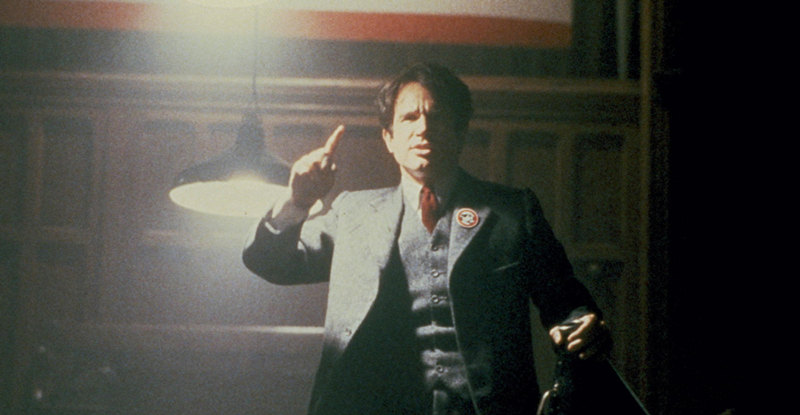It was the largest ship of its time, carrying 2,223 passengers and crew on its now-infamous maiden voyage. But she was fitted with only 20 lifeboats, and because of low fills and confusion just 710 people were saved after the luxury liner struck an iceberg. The rest drowned or died of hypothermia from the frigid North Atlantic waters. Among those who perished were millionaire John Jacob Astor IV and businessman Benjamin Guggenheim, the latter of whom was last seen decked out in evening wear sipping brandy and smoking a cigar, despite the pandemonium. He had reportedly given one survivor a message to pass along: “Tell my wife, if it should happen that my secretary and I both go down, tell her I played the game out straight to the end. No woman shall be left aboard this ship because Ben Guggenheim was a coward.”
Julian Fellowes (“Downton Abbey”) wrote the screenplay for this 2012 four-part miniseries, which carries the tagline “One voyage. A world of untold stories.” Astor’s and Guggenheim’s are among them, but, unfortunately, four 46-minute episodes don’t allow for nearly enough time to learn about all of the people whose stories Fellowes tries to tell. The problem is compounded by Fellowes’ decision to go with a narrative structure that was obviously influenced by “Lost,” in which key events are reshot, but with a new perspective or information added. While it may have been effective to revisit key events over 114 “Lost” episodes, the same technique founders with only four episodes to work with in “Titanic.” It seems merely redundant and tedious to watch the RMS Titanicscrape an iceberg at the 32-minute mark of the first episode, then again in the second episode, and so on. The time would have been better spent on character development.
Fans of “Downton Abbey” will recall that Season 1 of the popular mini-series began in April 1912 the day after the Titanic went down. It’s what set that drama in motion, so I suppose it’s no surprise that Fellowes would tackle a mini-series about the ill-fated ship. But does the world need another retelling of this maritime tragedy?
Perhaps. Different directors can have a look at the same world event and come up with a radically different story, and that’s what will resonate with viewers. What I remember most about the 1953 film “Titanic” isn’t the weave of a small cast of fictional characters’ lives, but the image of a man donning women’s clothes in order to save himself, while at the end most of the men were left on deck singing “Nearer, My God, to Thee” as the bow disappeared. That emphasis on self-sacrifice and male heroism was totally consistent with the attitudes of a post-WWII America. In 1997, James Cameron turned the disaster into a Shakespearian tragedy along the lines of “Romeo and Juliet,” as he focused on the romance between 17-year-old Rose and young man who won two Titanictickets in a poker game—star-crossed lovers from two different backgrounds whose future together was denied them by external forces.
Meanwhile, Fellowes looks at the sinking of the Titanicand sees a story about class—the haves and the have nots. As he did with “Downton Abbey,” he gives us a script that explores all levels of society as contained in this floating microcosm. Prejudices against the Irish and Italians are explored, as well how vastly different the onboard experience was for people in first class vs. steerage. We get shots of the Italians shoveling coal in the boiler room, and the story of the lone Italian waiter (“Keep it that way . . . they’re an excitable breed”) and a young woman he tries to help. And we get the story of an Irish Catholic electrician who wants to leave Belfast with his entire family—a deal offered him as part payment—because “there’s no career for a Catholic in Belfast.” As in “Downton” we get stories of the servants and of the masters they serve, with class differences looming even larger than that iceberg. It’s how Fellowes sees the world. Yet, apart from a single anarchist, everyone seems resigned to the fact that this is how things have always been, and their lives, even if full of hardship, still offer much to be thankful for.
The main characters include the Earl of Manton and his wife and daughter; his employee John Batley and his wife; Irish electrician Jim Maloney and his family; an anarchist named Peter; brothers Mario and Paolo working as crewmen; Captain Smith and his Second Officer; a silent movie actress and her mother; and businessman Ben Guggenheim and his mistress.
An inquest into the actual disaster produced the conclusions that the ship had conformed to current lifeboat requirements for ships of that size, but the regulations needed to be changed. The captain was also cited for proceeding into an ice field at too great a speed, and that’s shown here. So are shortcuts the White Star Line took to save money, such as using weaker iron rivets instead of steel, and skimping on lifeboats though they had the room for them. Curiously missing are radio messages from the nearby SS Californian, which was trapped in the ice field. According to reports, the Californian’s radio operator couldn’t get his message through because the Titanic’s operator was swamped with personal messages for the first-class passengers. The causes are here, but the bulk of this miniseries is concerned with the stories of the passengers and crew—the weakest of which is a subplot about a rich man’s “bastard” child onboard and the threat to expose his secret.
Video:
“Titanic” looks terrific in high definition, with an effective and clean-looking AVC/MPEG-4 transfer to a 50GB disc. Presented in 1.78:1 aspect ratio, “Titanic” features a strong amount of detail even in dark scenes, and colors and skin tones are absolutely realistic. And the CGI effects of the “Titanic,” while not as impressive (or expensive) as Cameron’s, do nothing to detract from the film. You believe it, plain and simple. The DVD also looks quite nice, presented in the same aspect ratio—though there’s not the same level of detail and more grain to be found.
Audio:
The audio is an impressive English DTS-HD MA 5.1 featured soundtrack that delivers some great ambient sounds, especially when we’re below decks in steerage where the crew are assembled and you can hear the ship creaking from the rear speakers. That type of sonic attention to detail helps to sustain a sense of realism that a film like this depends upon. Subtitles are only in English SDH, while on the DVD we get a Dolby Digital 5.1 audio.
Extras:
Fellowes is joined by director Jon Jones and producer Nigel Stafford-Clark for an above-average commentary track in which they talk about Cameron’s romanticism and the class approach that they opted for. They also talk about the structure, explaining that they thought that returning to the moment of impact might be a nice way to create tension. Well, even after listening to them talk, I’m not convinced. I think it has the opposite effect.
A 30-minute bonus feature offers a few of the cast talking about what drew them to the project, as well as providing a few scene-specific comments against a backdrop of clips from the film. It’s pretty standard. Better is “The Curse of the Titanic Sisters Documentary,” which talks about two other White Star Line ships in a 47-minute extra produced by National Geographic.
Meanwhile, people who find Fellowes’ trademark big cast of characters hard to follow can access profiles on some of the main characters (9 min.). Rounding out the bonus features is a minute-long time-lapse look at building a set, a 2-minute photo slideshow, the trailer, and 36 minutes of briefer featurettes (which overlap some with the making-of feature and commentary) on the production team, the script, the cast, the costumes, the final sequence, and the reason for filming in Budapest.
The bonus features are contained on a second HD Blu-ray disc, with a DVD of the film also provided.
Bottom line:
Watching this miniseries you end up drawing several conclusions: it should have been longer to allow for more character development, and that “Lost”-style plot repetition should have been jettisoned. Fellowes tries to use the same method of characterization here as he did with “Downton Abbey,” giving us the parallel lives of the haves and have nots, but it’s simply not as effective. That said, I’d take an approach like this over Cameron’s romanticism any day of the week.


